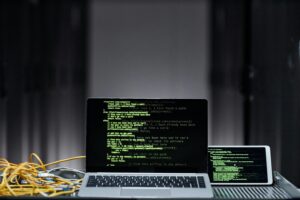A Comprehensive Guide to Cyber Safety Techniques


In an increasingly digital world, the importance of cyber safety cannot be overstated. Cyber safety encompasses practices and measures to protect computers, networks, programs, and data from unauthorized access, attacks, damage, or theft. As cyber threats evolve, individuals and organizations must stay vigilant and implement effective cyber safety techniques to safeguard their digital assets.
Strong Password Practices
Creating and managing strong passwords is a fundamental aspect of cyber safety. A strong password typically includes a mix of upper- and lowercase letters, numbers, and special characters. It should be at least 12 characters long and not include easily guessable information such as birthdays or common words.
Using unique passwords for different accounts can prevent a breach on one platform from compromising others. Password managers are invaluable tools that generate, store, and autofill strong, unique passwords for each account, significantly enhancing security.
Multi-Factor Authentication (MFA)
Multi-factor authentication (MFA) adds a layer of security by requiring multiple verification forms before granting access to an account. This often involves something you know (a password), something you have (a mobile device), or something you are (biometric data like fingerprints).
Enabling MFA on accounts, especially those containing sensitive information, can reduce the risk of unauthorized access. Many services now offer MFA options, making it an accessible and essential tool for enhancing cyber safety.
Regular Software Updates
Keeping software updated is crucial for cyber safety. Software updates often include patches for security vulnerabilities that cybercriminals could exploit.
Enable automatic updates wherever possible to ensure your operating systems, applications, and security software are always current. Regularly checking for updates manually can ensure you get all critical patches.
Secure Wi-Fi Networks
Securing your Wi-Fi network is another important step in maintaining cyber safety. Use strong, unique passwords for your Wi-Fi network and avoid using default passwords provided by the router manufacturer.
Consider using WPA3 encryption for your Wi-Fi, which is more secure than older encryption standards like WPA2. Additionally, hide your network’s SSID (Service Set Identifier) to make it less visible to unauthorized users.
Safe Browsing Habits
Adopting safe browsing habits is essential for avoiding many common cyber threats. Be cautious when clicking on links or downloading attachments from unknown sources, as these can often be used to spread malware.
Installed and maintained up-to-date antivirus and anti-malware software to detect and block potential threats. Use secure, encrypted connections (HTTPS) whenever possible to protect data transmitted over the internet.
Email Security
Emails are a common vector for cyber attacks, including phishing and malware distribution. To enhance email security, be wary of unsolicited emails, especially those that request personal information or contain suspicious attachments or links.
Consider using email filtering tools to block spam and phishing attempts. Implementing email authentication protocols like SPF (Sender Policy Framework) and DMARC (Domain-based Message Authentication, Reporting & Conformance) can also help verify the legitimacy of emails and reduce phishing risks.
Data Encryption
Encrypting sensitive data is vital for protecting it from unauthorized access. Encryption converts data into a coded format that can only be read by someone with the decryption key.
Encryption stores data on devices and transmits it over the internet. Many operating systems and applications offer built-in encryption tools that can be easily enabled to enhance data security.
Backup and Recovery Solutions
Regular data backup ensures that it can be recovered during a cyber attack, hardware failure, or other incidents resulting in data loss. Implementing a robust backup and recovery strategy involves creating regular backups and storing them in multiple locations, including offsite or cloud storage.
Test backup and recovery processes periodically to ensure data can be restored quickly and accurately when needed. Automated backup solutions can streamline this process and provide peace of mind.
Social Engineering Awareness
Social engineering attacks manipulate individuals into divulging confidential information. Common tactics include phishing emails, pretexting, baiting, and tailgating.
Training and awareness programs can educate individuals about the dangers of social engineering and teach them how to recognize and respond to suspicious activities. Encourage employees to verify the identity of anyone requesting sensitive information and report suspicious interactions immediately.
Secure Mobile Devices
Cybercriminals often target mobile devices due to their widespread use and the valuable data they contain. To enhance mobile device security, use strong passwords or biometric authentication, enable encryption, and keep the operating system and apps current.
Install security software to detect and block threats, and be cautious when downloading apps, especially from third-party app stores. Regularly review app permissions and deactivate those that request access to unnecessary information.
Implementing Firewalls
Firewalls act as barriers between your network and potential threats from the internet. They monitor incoming and outgoing traffic and block any suspicious activity.
Ensure that hardware and software firewalls are enabled and properly configured to protect your network. Regularly update firewall rules and policies to adapt to new threats and maintain optimal security.
Regular Security Audits and Assessments
Regular security audits and assessments help identify vulnerabilities and areas for improvement in your cyber safety measures. These assessments can include penetration testing, vulnerability scanning, and reviewing access controls.
Engage with cybersecurity professionals to perform thorough audits and provide recommendations for enhancing security. Implementing the findings from these assessments can significantly strengthen your overall cyber safety posture.
Cyber safety is a critical aspect of modern life that requires ongoing attention and effort. Individuals and businesses can significantly reduce their risk of cyber threats by implementing strong password practices, enabling multi-factor authentication, keeping software updated, securing Wi-Fi networks, and adopting safe browsing habits. Additionally, email security, data encryption, backup solutions, and awareness of social engineering tactics are essential components of a comprehensive cyber safety strategy. Regular security audits and assessments, securing mobile devices, and implementing firewalls enhance protection against cyber attacks. Staying vigilant and proactive in these areas is essential for safeguarding digital assets and maintaining a secure online environment.





